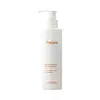What's inside
What's inside
 Key Ingredients
Key Ingredients

 Benefits
Benefits

 Concerns
Concerns

 Ingredients Side-by-side
Ingredients Side-by-side

Water
Skin ConditioningGlycerin
HumectantDisodium Cocoamphodiacetate
CleansingAcrylates Copolymer
Potassium Cocoyl Glycinate
Disodium Laureth Sulfosuccinate
CleansingSodium Cocoyl Isethionate
CleansingDecyl Glucoside
CleansingPanax Ginseng Root Water
Masking1,2-Hexanediol
Skin ConditioningSodium Benzoate
MaskingPogostemon Cablin Leaf Oil
MaskingHelianthus Annuus Seed Oil
EmollientJuniperus Mexicana Oil
MaskingPelargonium Graveolens Flower Oil
MaskingLavandula Angustifolia Oil
MaskingGlyceryl Stearate
EmollientMalt Extract
Skin ProtectingDisodium EDTA
Macadamia Ternifolia Seed Oil
EmollientRosa Canina Fruit Oil
EmollientLactobacillus/Portulaca Oleracea Ferment Extract
AntioxidantLactobacillus/Licorice Root Extract Ferment Filtrate
Skin ConditioningLactobacillus/Lycium Chinense Fruit Extract Ferment Filtrate
AntioxidantLactobacillus/Houttuynia Cordata Leaf Extract Ferment Filtrate
Skin ConditioningLactobacillus/Panax Ginseng Root Extract Ferment Filtrate
Skin ConditioningLactobacillus/Astragalus Membranaceus Root Extract Ferment Filtrate
AntioxidantLactobacillus/Scutellaria Baicalensis Root Extract Ferment Filtrate
AntioxidantLactobacillus/Pueraria Lobata Root Extract Ferment Filtrate
Skin ConditioningLactobacillus
Skin ConditioningSaccharomyces/Camellia Sinensis Leaf Ferment Filtrate
Skin ConditioningButylene Glycol
HumectantGinsenosides
Skin ConditioningGalactomyces Ferment Filtrate
HumectantCarica Papaya Fruit Extract
Skin ConditioningEthylhexylglycerin
Skin ConditioningPanthenol
Skin ConditioningCitric Acid
BufferingAcetyl Hexapeptide-8
HumectantCopper Tripeptide-1
Skin ConditioningPalmitoyl Pentapeptide-4
Skin ConditioningAcetyl Tetrapeptide-5
HumectantPalmitoyl Tripeptide-1
Skin ConditioningNonapeptide-1
Skin ConditioningDipeptide-2
Skin ConditioningTripeptide-1
Skin ConditioningHexapeptide-9
Skin ConditioningDimethyl Sulfone
SolventCapryloyl Salicylic Acid
ExfoliatingGluconic Acid
Linalool
PerfumingWater, Glycerin, Disodium Cocoamphodiacetate, Acrylates Copolymer, Potassium Cocoyl Glycinate, Disodium Laureth Sulfosuccinate, Sodium Cocoyl Isethionate, Decyl Glucoside, Panax Ginseng Root Water, 1,2-Hexanediol, Sodium Benzoate, Pogostemon Cablin Leaf Oil, Helianthus Annuus Seed Oil, Juniperus Mexicana Oil, Pelargonium Graveolens Flower Oil, Lavandula Angustifolia Oil, Glyceryl Stearate, Malt Extract, Disodium EDTA, Macadamia Ternifolia Seed Oil, Rosa Canina Fruit Oil, Lactobacillus/Portulaca Oleracea Ferment Extract, Lactobacillus/Licorice Root Extract Ferment Filtrate, Lactobacillus/Lycium Chinense Fruit Extract Ferment Filtrate, Lactobacillus/Houttuynia Cordata Leaf Extract Ferment Filtrate, Lactobacillus/Panax Ginseng Root Extract Ferment Filtrate, Lactobacillus/Astragalus Membranaceus Root Extract Ferment Filtrate, Lactobacillus/Scutellaria Baicalensis Root Extract Ferment Filtrate, Lactobacillus/Pueraria Lobata Root Extract Ferment Filtrate, Lactobacillus, Saccharomyces/Camellia Sinensis Leaf Ferment Filtrate, Butylene Glycol, Ginsenosides, Galactomyces Ferment Filtrate, Carica Papaya Fruit Extract, Ethylhexylglycerin, Panthenol, Citric Acid, Acetyl Hexapeptide-8, Copper Tripeptide-1, Palmitoyl Pentapeptide-4, Acetyl Tetrapeptide-5, Palmitoyl Tripeptide-1, Nonapeptide-1, Dipeptide-2, Tripeptide-1, Hexapeptide-9, Dimethyl Sulfone, Capryloyl Salicylic Acid, Gluconic Acid, Linalool
Honey
HumectantRoyal Jelly Extract
Skin ConditioningCeramide NP
Skin ConditioningVitis Vinifera Seed Oil
EmollientSaponaria Officinalis Leaf Extract
AntimicrobialQuillaja Saponaria Bark Extract
CleansingSapindus Mukorossi Fruit Extract
Skin ConditioningOlea Europaea Leaf Extract
PerfumingOenothera Biennis Oil
EmollientLactobacillus/Soybean Ferment Extract
Skin ConditioningPortulaca Oleracea Extract
Skin ConditioningCinnamomum Cassia Bark Extract
MaskingScutellaria Baicalensis Root Extract
AstringentOriganum Vulgare Leaf Extract
Skin ConditioningChamaecyparis Obtusa Leaf Extract
Skin ConditioningSalix Alba Bark Extract
AstringentGlycolipids
Skin ConditioningPhytosphingosine
Skin ConditioningSodium Cocoyl Glycinate
CleansingSodium Cocoyl Apple Amino Acids
Skin ConditioningPotassium Cocoyl Hydrolyzed Oat Protein
Skin ConditioningBabassuamidopropyl Betaine
CleansingCoco-Glucoside
CleansingPotassium Stearate
CleansingPotassium Myristate
EmulsifyingTromethamine
BufferingSodium Surfactin
CleansingGlyceryl Laurate
EmollientHydrogenated Lecithin
EmulsifyingErythritol
HumectantCaprylic/Capric Triglyceride
MaskingButylene Glycol
HumectantDipropylene Glycol
HumectantC12-15 Alkyl Benzoate
AntimicrobialCaprylyl Glycol
EmollientHexylene Glycol
EmulsifyingEthylhexylglycerin
Skin ConditioningGlyceryl Caprylate
EmollientSodium Benzoate
MaskingPentylene Glycol
Skin ConditioningCI 17200
Cosmetic ColorantCI 19140
Cosmetic ColorantTetrasodium Glutamate Diacetate
Disodium EDTA
Parfum
MaskingHoney, Royal Jelly Extract, Ceramide NP, Vitis Vinifera Seed Oil, Saponaria Officinalis Leaf Extract, Quillaja Saponaria Bark Extract, Sapindus Mukorossi Fruit Extract, Olea Europaea Leaf Extract, Oenothera Biennis Oil, Lactobacillus/Soybean Ferment Extract, Portulaca Oleracea Extract, Cinnamomum Cassia Bark Extract, Scutellaria Baicalensis Root Extract, Origanum Vulgare Leaf Extract, Chamaecyparis Obtusa Leaf Extract, Salix Alba Bark Extract, Glycolipids, Phytosphingosine, Sodium Cocoyl Glycinate, Sodium Cocoyl Apple Amino Acids, Potassium Cocoyl Hydrolyzed Oat Protein, Babassuamidopropyl Betaine, Coco-Glucoside, Potassium Stearate, Potassium Myristate, Tromethamine, Sodium Surfactin, Glyceryl Laurate, Hydrogenated Lecithin, Erythritol, Caprylic/Capric Triglyceride, Butylene Glycol, Dipropylene Glycol, C12-15 Alkyl Benzoate, Caprylyl Glycol, Hexylene Glycol, Ethylhexylglycerin, Glyceryl Caprylate, Sodium Benzoate, Pentylene Glycol, CI 17200, CI 19140, Tetrasodium Glutamate Diacetate, Disodium EDTA, Parfum
 Reviews
Reviews

Ingredients Explained
These ingredients are found in both products.
Ingredients higher up in an ingredient list are typically present in a larger amount.
Butylene Glycol (or BG) is used within cosmetic products for a few different reasons:
Overall, Butylene Glycol is a safe and well-rounded ingredient that works well with other ingredients.
Though this ingredient works well with most skin types, some people with sensitive skin may experience a reaction such as allergic rashes, closed comedones, or itchiness.
Learn more about Butylene GlycolDisodium EDTA plays a role in making products more stable by aiding other preservatives.
It is a chelating agent, meaning it neutralizes metal ions that may be found in a product.
Disodium EDTA is a salt of edetic acid and is found to be safe in cosmetic ingredients.
Learn more about Disodium EDTAEthylhexylglycerin (we can't pronounce this either) is commonly used as a preservative and skin softener. It is derived from glyceryl.
You might see Ethylhexylglycerin often paired with other preservatives such as phenoxyethanol. Ethylhexylglycerin has been found to increase the effectiveness of these other preservatives.
Sodium Benzoate is a preservative. It's used in both cosmetic and food products to inhibit the growth of mold and bacteria. It is typically produced synthetically.
Both the US FDA and EU Health Committee have approved the use of sodium benzoate. In the US, levels of 0.1% (of the total product) are allowed.
Sodium benzoate works as a preservative by inhibiting the growth of bacteria inside of cells. It prevents the cell from fermenting a type of sugar using an enzyme called phosphofructokinase.
It is the salt of benzoic acid. Foods containing sodium benzoate include soda, salad dressings, condiments, fruit juices, wines, and snack foods.
Studies for using ascorbic acid and sodium benzoate in cosmetics are lacking, especially in skincare routines with multiple steps.
We always recommend speaking with a professional, such as a dermatologist, if you have any concerns.
Learn more about Sodium Benzoate